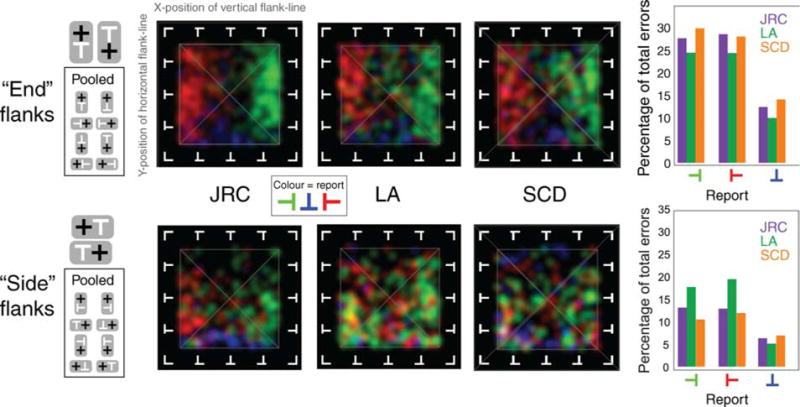Figure 5.

Errors from the three subjects have been rotated so that they are relative to an upright “T” and pooled within end- and side-flanked conditions. Flanker configuration strongly determines subjects’ report in end-flanked conditions but less so in side-flanked conditions. Bar graphs indicate that (a) error rates are approximately twice as high in end- compared to side-flanked conditions and (b) errors arising from 180° target rotations are only half as frequent as reports of 90° rotation. In subsequent discussion of these findings, it is important to recall that these are object-centered results; end-flanking can arise with any absolute target orientation, or with any absolute configuration of target and flanker.
